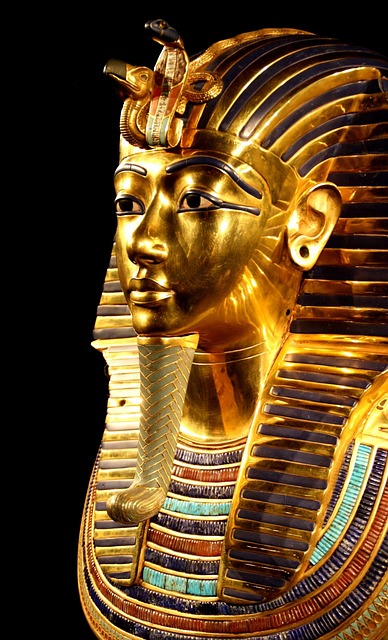The article explains the steps to convert a traditional IRA into a self-directed IRA that allows investment in gold, adhering to IRS guidelines. Investors must choose a specialized custodian who handles alternative assets, open a self-directed IRA account, and fund it via rollover or cash contribution within annual limits. After funding, investors can purchase IRS-approved gold that meets fineness requirements, either through an insured depository with segregated storage or a communal vault, all while considering the fees and tax implications. It's essential to use reputable precious metals dealers who comply with regulatory standards and provide transparent transactions. The process involves thorough due diligence to ensure compliance with IRS regulations, including purity standards for gold investments, and adherence to laws like the Bank Secrecy Act to protect against money laundering. Regular appraisals are necessary for accurate valuations, and investors should stay informed about market trends and gold pricing for effective management of their Gold IRA. Diversification within a Gold IRA is possible with various precious metals that meet the IRS's fineness standards for each type.
Exploring the transformation of a traditional Individual Retirement Account (IRA) into a tangible asset portfolio rich with gold requires navigating the specialized realm of self-directed IRAs, particularly those permitting precious metals investments. This article demystifies the process, guiding you through the intricacies of establishing a self-directed IRA to diversify your retirement savings with gold. We will delve into the essential steps for account setup, selecting a reputable dealer, adhering to IRS regulations, and securing your investments. Join us as we chart a clear path to integrating gold into your retirement strategy, ensuring your financial future is as resilient as the precious metal itself.
- Understanding Self-Directed IRAs for Precious Metals
- Steps to Open a Self-Directed IRA for Gold Investments
- Choosing a Trustworthy Precious Metals Dealer
- IRS Rules Governing Gold in IRAs
- Storing and Managing Your Gold IRA Holdings
Understanding Self-Directed IRAs for Precious Metals

When considering the conversion of a traditional IRA to one that holds gold and other precious metals, it’s crucial to first understand what a self-directed IRA is and how it functions within the realm of investment. A self-directed IRA is a type of individual retirement account that provides investors with the ability to select a wide array of assets beyond the typical stock and bond offerings. Unlike traditional IRAs managed by financial institutions, self-directed IRAs are overseen by custodians who specialize in alternative investments, such as precious metals. These accounts allow for the purchase of gold, silver, platinum, and palladium coins or bars that meet specific fineness requirements set forth by the Internal Revenue Service (IRS). It’s important to adhere to IRS regulations concerning the types and amounts of metals that can be held within the account.
The process begins with establishing a self-directed IRA through a custodian that allows for precious metal investments. Once set up, investors can direct their custodian to purchase qualifying metals. It’s essential to conduct thorough due diligence and work with reputable dealers when acquiring these metals to ensure compliance with IRS rules. The physical metals are then stored in a depository approved by the IRS, which provides security and accountability for the assets within the IRA. Investors should be aware of the ongoing maintenance fees associated with storage and custodial services, as well as the tax implications of adding or withdrawing funds from their self-directed IRA. By understanding these components, investors can make informed decisions when integrating precious metals into their retirement portfolios.
Steps to Open a Self-Directed IRA for Gold Investments

To initiate the process of converting your traditional IRA to a self-directed IRA for gold investments, the first step is to select a custodian that specializes in alternative assets, including precious metals. Research and choose a reputable custodian that is approved by the Internal Revenue Service (IRS) to handle such accounts. Once you’ve identified a custodian, you can open an account by providing necessary personal information and completing any required forms. These forms will establish your self-directed IRA and authorize the custodian to manage your investments within the IRS guidelines.
After opening your self-directed IRA, the next step is to fund the account. You can do this by rolling over funds from an existing IRA or by making a cash contribution if you’re within the annual contribution limits set by the IRS. The custodian will provide you with the necessary paperwork for the rollover process, which typically involves your current IRA custodian sending the funds directly to the new self-directed IRA custodian. Once the rollover is complete and the funds are in your new account, you can begin allocating a portion of your IRA to gold investments. Ensure that your chosen investments comply with the IRS’s purity standards for precious metals, which include specific fineness requirements for gold coins and bullion. Your custodian can assist you in selecting eligible gold products for purchase and facilitate the transaction with a trusted precious metals dealer. With these steps completed, you will have successfully established a self-directed IRA that allows for gold investments, paving the way for diversifying your retirement portfolio with physical gold.
Choosing a Trustworthy Precious Metals Dealer

When considering the conversion of an IRA to gold, selecting a reputable precious metals dealer is paramount. These dealers specialize in rare metals and must adhere to strict standards set by regulatory bodies such as the Internal Revenue Service (IRS) and the Department of the Treasury. A trustworthy dealer will have a proven track record, transparent pricing without hidden fees, and a wide array of eligible IRA-approved precious metals. They should provide detailed information on the purity and source of their products, ensuring compliance with the legal requirements for IRS-approved gold and other metals. Additionally, they ought to guide you through the process, from selection to delivery, with clear communication and customer support. It’s advisable to perform due diligence by researching dealer reviews, checking their accreditation status, and verifying their compliance history before finalizing any transactions. This due diligence is crucial in establishing a secure and compliant investment within your self-directed IRA.
IRS Rules Governing Gold in IRAs

The Internal Revenue Service (IRS) strictly governs the types of investments permissible within Individual Retirement Accounts (IRAs). For IRAs that hold gold, the rules are specific to ensure compliance with IRS standards. As per the IRS, gold in an IRA must meet certain purity criteria; it must be at least 99.9% pure for coins and 24-karat pure for bars. The IRS mandates that these precious metals be held by a reputable custodian approved by the IRS and must be stored in an IRS-approved depository. This is to safeguard the assets within the retirement account and to maintain transparency in their valuation. Additionally, transactions involving gold within an IRA are subject to reporting requirements under the Bank Secrecy Act (BSA) and anti-money laundering laws. These regulations are designed to protect investors and ensure the integrity of retirement savings within the framework of tax-advantaged investment accounts. Investors looking to include gold in their IRAs must adhere to these IRS rules, which dictate not only the types of precious metals that can be held but also how they can be acquired, stored, and managed within the IRA structure.
Storing and Managing Your Gold IRA Holdings

When transitioning traditional paper assets to a Gold IRA, it’s crucial to consider the logistics of storing and managing your physical gold holdings. The Internal Revenue Service (IRS) mandates that physical gold in an IRA must be held by a custodian approved by the IRS. These custodians maintain secure storage facilities or partner with third-party vaults to safeguard your investment. You have options for storage: either through an insured depository, which offers segregated storage (meaning your gold is stored separately from that of other investors), or unsegregated storage, where your gold is held within a larger pool of bullion, coins, and bars.
Managing your Gold IRA involves regular appraisals to ensure the value of your holdings reflects the current market prices. The custodian typically arranges for an independent third party to assess the value of your gold. Additionally, you should stay informed about market trends and the price of gold to make strategic decisions regarding allocations within your account. Diversification within your Gold IRA can also be managed by including different types of precious metals, as the IRS allows for investments in gold, silver, platinum, and palladium coins and bars that meet their fineness requirements. Keeping abreast of these details is essential for effectively managing your Gold IRA holdings and securing your financial future.
In conclusion, transitioning an Individual Retirement Account (IRA) into a gold investment is a multifaceted process that requires careful planning and adherence to IRS regulations. By establishing a self-directed IRA with the capacity for precious metals, investors can diversify their retirement portfolio with physical gold. The key steps include selecting a reputable self-directed IRA custodian, identifying a trustworthy precious metals dealer, understanding the rules set forth by the IRS, and ensuring secure storage and management of your gold holdings. With due diligence and strategic planning, investors can explore this alternative investment as part of their retirement strategy.
